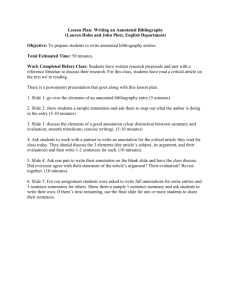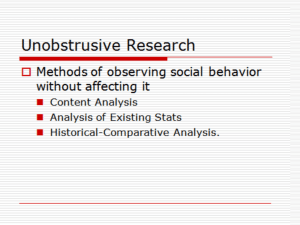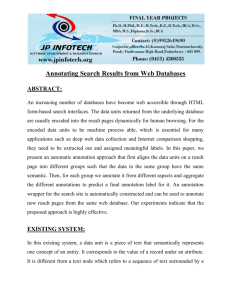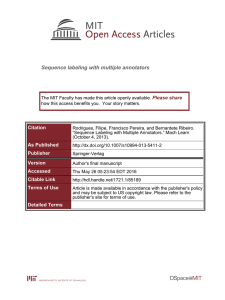slides
advertisement
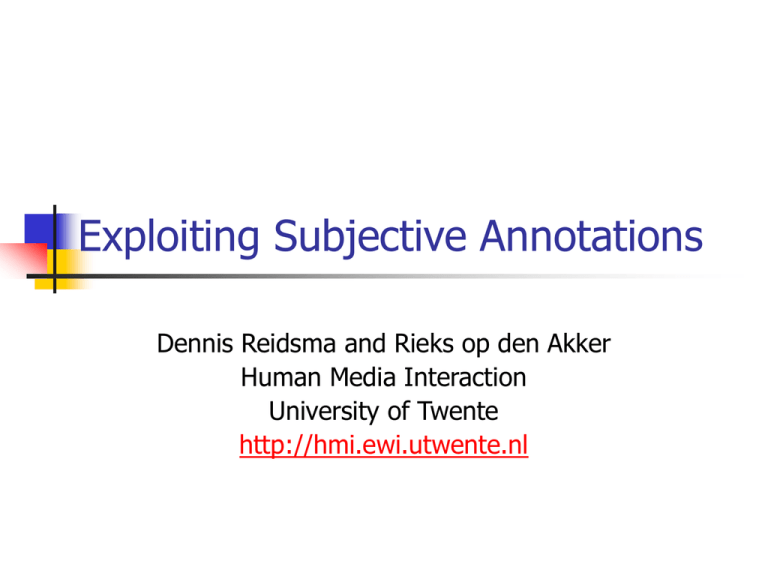
Exploiting Subjective Annotations Dennis Reidsma and Rieks op den Akker Human Media Interaction University of Twente http://hmi.ewi.utwente.nl Types of content Annotation as a task of subjective judgments? Manifest content Pattern latent content Projective latent content Cf. Potter and Levine-Donnerstein 1999 Projective latent content Why annotate data as projective latent content? Because it cannot be defined exhaustively, whereas annotators have good `mental schema’s’ for it Because the data should be annotated in terms that fit with the understanding of `naïve users’ Inter-annotator agreement and projective content Disagreements may be caused by Errors by annotators Invalid scheme (no true label exists) Different annotators having different `truths’ in interpretation of behavior (subjectivity) Subjective annotation People communicate in different ways, and therefore, as an observer, may also judge the behavior of others differently Subjective annotation People communicate in different ways, and therefore, as an observer, may also judge the behavior of others differently Projective content may be especially vulnerable to this problem Subjective annotation People communicate in different ways, and therefore, as an observer, may also judge the behavior of others differently Projective content may be especially vulnerable to this problem How to work with subjectively annotated data? Subjective annotation How to work with subjectively annotated data? Unfortunately, it leads to low levels of agreement, and therefore usually would be avoided as `unproductive material’ I. Predicting agreement One way to work with subjective data is to try to find out in which contexts annotators would agree, and focus on those situations. Result: a classifier that will not always classify all instances, but if it does, it will do so with greater accuracy II. Explicitly modeling intersubjectivity A second way: model different annotators separately, then find the cases where the models agree, and assume that those are the cases where the annotators would have agreed, too. Result: a classifier that tells you for which instances other annotators would most probably agree with its classification Advantages Both solutions lead to `cautious classifiers’ that only render a judgment in those cases where annotators would have been expected to agree This may carry over to users, too… Neither solution needs to have all data multiply annotated for this Time? Pressing questions so far? (The remainder of the talk will give two case studies.) Case studies I. Predicting agreement from information in other (easier) modalities: The case of contextual addressing II. Explicitly modeling intersubjectivity in dialog markup: The case of Voting Classifiers Data used: The AMI Corpus 100h of recorded meetings, annotated with dialog acts, focus of attention, gestures, addressing, decision points, and other layers I. Contextual addressing Addressing, and focus of attention. Agreement is highest for certain FOA contexts. In those contexts, the classifier also performed better. … more in paper II. Modeling intersubjectivity Modeling single annotators, for `yeah’ utterances Data annotated non-overlapping, 3 annotators All data d s Trn Tst Trn Tst (3585) (2289) (1753) (528) v Trn Tst (3500) (1362) II. Modeling intersubjectivity Cross annotator training and testing TST_d TST_s TST_v TST_all C_d 69 64 52 63 C_s 59 68 48 57 C_v 63 57 66 63 II. Modeling intersubjectivity Building a voting classifier: Only classify an instance when all three annotator-specific expert classifiers agree II. Modeling intersubjectivity In the unanimous voting context, performance is higher due to increased precision (avg 6%) Conclusions Possible subjective aspects to annotation should be taken into account Agreement metrics are not designed to handle this We proposed two methods designed to cope with subjective data Thank you! Questions?
